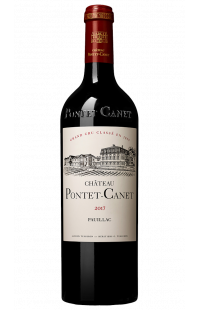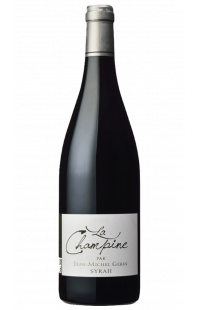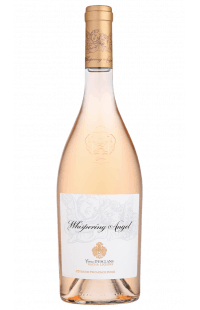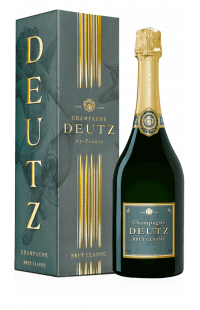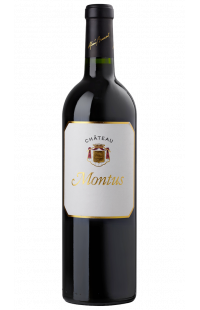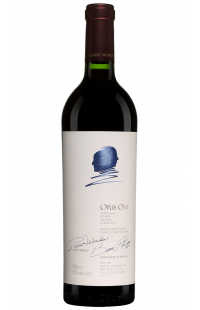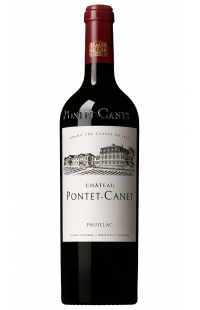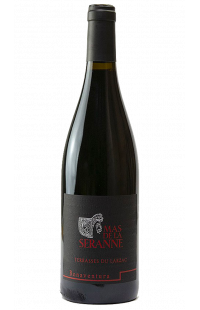- Menu
- All our wines
- Bordeaux
-
Rhône
-
Burgundy
-
Rosés Wines
-
Champagne
- France
-
World
- PRIMEURS
- ORGANIC WINES
Vins des Terrasses du Larzac
There are 4 products.
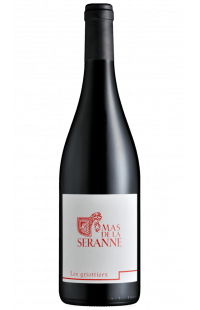
Available in
- Bottle (75cl)
- 11.70€ / bottleTASTING NOTES
Specifications
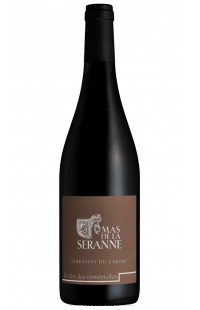
Available in
- Bottle (75cl)
- 19.90€ / bottleTASTING NOTES
Specifications
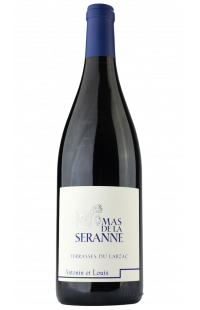
Available in
- Bottle (75cl)
- 25.00€ / bottleTASTING NOTES
Specifications
The Wines of Terrasses du Larzac: An Invaluable Treasure
Introduction to the Wines of Terrasses du Larzac
History and Origins
The Terrasses du Larzac, located in the Languedoc wine region of France, are known for producing some of the most distinctive and admired wines in the area. The viticultural history of this region dates back to Roman times, when vine cultivation was already a common practice. However, it is only recently that the wines of Terrasses du Larzac have gained international recognition, thanks to concerted efforts to improve the quality and reputation of their products.
Importance of the Region
The Terrasses du Larzac stand out due to their unique terroir, which combines specific geographical, climatic, and geological factors. This region benefits from a variety of microclimates, varied altitudes, and rich soils, offering winemakers the opportunity to produce wines with complex and varied characteristics. The Appellation d'Origine Contrôlée (AOC) Terrasses du Larzac, recognized in 2014, underscores the importance and exceptional quality of these wines on the world stage.
The Terroir of the Terrasses du Larzac
Geology and Soils
The terroir of the Terrasses du Larzac is exceptionally diverse. The region's geology includes a combination of limestone, schist, and marl, each contributing to the complexity of the wines produced. Mineral-rich and well-drained soils allow the vines to root deeply, which is crucial for producing high-quality grapes.
Climate and Microclimates
The climate of the Terrasses du Larzac is primarily Mediterranean, with mountainous influences due to the proximity of the Larzac plateau. This creates ideal conditions for viticulture, with warm and sunny days and cool nights. These temperature variations promote slow and balanced ripening of the grapes, thus preserving their natural acidity and developing complex aromas.
Influence of Altitude
Altitude plays a crucial role in the quality of the wines from the Terrasses du Larzac. Vineyards located at higher altitudes benefit from cooler temperatures and refreshing winds, which contribute to a slower ripening of the grapes and preservation of their freshness. This altitude also allows for the production of wines with greater structure and increased aromatic complexity.
The Grape Varieties of the Terrasses du Larzac
Red Grape Varieties
Red grape varieties dominate the vineyards of the Terrasses du Larzac, with varieties such as Syrah, Grenache, Mourvèdre, and Carignan. These grapes are often blended to create powerful and balanced wines characterized by aromas of red and black fruits, spices, and herbaceous notes.
White Grape Varieties
Although less widespread, white grape varieties also play an important role in the region. Viognier, Roussanne, and Marsanne are commonly cultivated and used to produce aromatic white wines with floral, fruity, and mineral notes.
Rare and Forgotten Varieties
Some winemakers in the Terrasses du Larzac turn to rare and forgotten grape varieties to create unique and innovative wines. These varieties, often from old vines, bring distinctive characteristics and enrich the diversity of the region's wines.
Winemaking Techniques
Traditional Methods
Traditional winemaking techniques remain at the heart of wine production in the Terrasses du Larzac. Manual harvesting, open-tank fermentation, and the use of indigenous yeasts are common practices that respect the terroir and viticultural traditions of the region.
Modern Innovations
However, winemakers do not hesitate to incorporate modern innovations to improve the quality and efficiency of their production. The use of advanced technologies for temperature control during fermentation, as well as prolonged maceration techniques, allows for the extraction of richer and more complex aromas and tannins.
Barrel Aging
Aging in oak barrels, whether new or old, is an essential step in the winemaking process of the Terrasses du Larzac. This process adds aromas of vanilla, toast, and wood to the wines while conferring a tannic structure and increased aging potential.
Renowned Estates and Winemakers
Winemaker Profiles
The Terrasses du Larzac region is rich in passionate and talented winemakers, each bringing their own vision and expertise to wine production. Iconic figures like Pierre Clavel and Olivier Jullien have played a decisive role in the recognition of the appellation, while young winemakers continue to innovate and raise quality standards.
Historic Estates
Historic estates such as Mas Jullien and Domaine de Montcalmès are pillars of the region, known for their exceptional wines and commitment to tradition and excellence. These estates often possess century-old vineyards and use winemaking techniques passed down through generations.
New Generations of Winemakers
The new generation of winemakers in the Terrasses du Larzac brings renewed energy and creativity to the region. They are often more open to experimentation and the use of sustainable and biodynamic viticultural practices, thus contributing to the evolution and diversification of the region's wine offerings.
Characteristics of Terrasses du Larzac Wines
Taste Profile
The wines of the Terrasses du Larzac are distinguished by their balance and complexity. The reds offer intense aromas of dark fruits, licorice, and spices, with well-integrated tannins and refreshing acidity. The whites present notes of stone fruits, white flowers, and pronounced minerality.
Aromas and Flavors
The aromas of Terrasses du Larzac wines vary depending on the grape varieties and winemaking techniques, but they all share remarkable intensity and richness. Notes of cherry, blackcurrant, pepper, and wild herbs are found in the reds, while the whites offer nuances of peach, apricot, honey, and acacia flowers.
Aging and Cellaring Potential
The wines of the Terrasses du Larzac have excellent aging potential, particularly the reds. Thanks to their solid tannic structure and balanced acidity, these wines can age for a decade or more, developing complex tertiary aromas of leather, forest floor, and truffle over time.
Food and Wine Pairings
Regional Dishes
The wines of the Terrasses du Larzac pair perfectly with regional dishes from Languedoc. A rich and savory cassoulet from Castelnaudary finds an ideal companion in a powerful red from the region. Similarly, grilled fish with fennel is enhanced by a fresh and aromatic white wine from the Terrasses du Larzac.
Innovative Pairings
For those who enjoy more daring food and wine pairings, the wines of the Terrasses du Larzac offer numerous possibilities. A full-bodied red can wonderfully accompany a spicy Asian dish, while a mineral-noted white will pair perfectly with raw seafood or ceviche.
Sommelier Tips
Sommeliers recommend serving Terrasses du Larzac white wines slightly chilled (around 10-12°C) and reds at cellar temperature (around 16-18°C). This allows their aromas and structure to shine. For a perfect match, it is advisable to choose a wine based on the intensity of the dish, favoring complementary or contrasting pairings.
The Economic and Cultural Impact of Terrasses du Larzac Wines
Wine Tourism
The success of Terrasses du Larzac wines has a significant impact on local tourism. Many wine enthusiasts visit the region to explore the vineyards, participate in tastings, and learn more about the winemaking processes. This influx contributes to local economic development by supporting businesses, restaurants, and accommodations.
Festivals and Events
The region also organizes several wine-related festivals and events, such as the Terrasses du Larzac Wine Festival, where visitors can taste a wide selection of wines, meet winemakers, and participate in oenological workshops. These events play a crucial role in promoting the region's wines and preserving local viticultural culture.
Contribution to the Local Economy
The wines of the Terrasses du Larzac have become a major economic driver for the region. Growth in exports, increased bottle prices, and the growing popularity of wine tourism are factors that strengthen the local economy. Winemakers, by working sustainably and valuing their heritage, also contribute to the preservation of landscapes and the revitalization of rural areas.
Challenges and Opportunities
Climatic Challenges
Like many other wine regions, the Terrasses du Larzac face challenges posed by climate change. Hotter summers and prolonged periods of drought can affect the quality and yield of harvests. Winemakers must adapt to these changing conditions by adjusting their viticultural practices, for example, by introducing grape varieties more resistant to heat or modifying water management techniques.
International Competition
Although the wines of the Terrasses du Larzac have gained notoriety, they also face fierce international competition. New World wine regions like Australia and the United States offer high-quality wines at competitive prices. To remain competitive, Terrasses du Larzac winemakers must continue to innovate, maintain high-quality standards, and strengthen their brand image in international markets.
Market Opportunities
Despite these challenges, many opportunities are emerging for Terrasses du Larzac wines. The growing trend toward organic and biodynamic products offers an expanding market for producers adopting these sustainable practices. Additionally, the increasing interest in terroir wines and Appellations d'Origine Contrôlée (AOC) favors demand for authentic and distinctive wines like those from the Terrasses du Larzac.
The Future of Terrasses du Larzac Wines
Trend Toward Biodynamics
Many winemakers in the Terrasses du Larzac are adopting biodynamic viticultural practices, aligning with a global trend toward more sustainable and environmentally friendly production methods. This holistic approach, which takes into account lunar cycles and uses natural preparations to strengthen the vine, contributes to the quality and expression of the terroir in the wines.
Research Projects
Research projects are underway to further improve the quality of Terrasses du Larzac wines and address challenges posed by climate change. These initiatives include studies on resistant grape varieties, optimization of viticultural practices, and trials of new winemaking techniques.
Future Innovations
The future of Terrasses du Larzac wines looks promising, with many innovations on the horizon. Whether it's new winemaking techniques, experimentation with forgotten grape varieties, or promoting wines in new markets, the region's winemakers are determined to preserve and enrich their viticultural heritage while adapting to the demands of the 21st century.
FAQs
What makes the wines of the Terrasses du Larzac unique? The wines of the Terrasses du Larzac are unique due to their exceptional terroir, which combines mineral-rich soils, a Mediterranean climate with mountainous influences, and varied altitudes. These factors, along with winemaking techniques that respect both tradition and modern innovations, give rise to complex, balanced wines deeply rooted in their terroir.
What are the main grape varieties used? The main grape varieties used in Terrasses du Larzac wines are Syrah, Grenache, Mourvèdre, and Carignan for reds, and Viognier, Roussanne, and Marsanne for whites. These grapes are often blended to create wines with rich and complex aromas.
How can I visit the vineyards of the Terrasses du Larzac? To visit the vineyards of the Terrasses du Larzac, it is recommended to contact the estates directly to arrange tastings and guided tours. The region also offers wine tourism circuits that allow you to discover multiple vineyards, as well as wine-related events and festivals.
What are the best recent vintages? Recent vintages of the Terrasses du Larzac, such as 2016, 2017, and 2019, have been particularly well-received by critics. These years benefited from favorable climatic conditions, allowing for the production of wines with excellent aromatic concentration and aging potential.
Are the wines of the Terrasses du Larzac biodynamic? Many estates in the Terrasses du Larzac adopt biodynamic practices, aligning with a growing trend toward sustainable and environmentally friendly production methods. These biodynamic wines reflect the region's terroir even more faithfully.
Where can I buy wines from the Terrasses du Larzac? Wines from the Terrasses du Larzac can be purchased directly from the estates, at specialized wine shops, or online through websites dedicated to selling quality wines. They can also be found in certain restaurants and wine bars that highlight local products.
Conclusion
The wines of the Terrasses du Larzac represent an exceptional viticultural heritage, combining tradition, innovation, and respect for the terroir. Their aromatic complexity, aging potential, and ability to pair with a wide range of dishes make them sought after by both connoisseurs and enthusiasts. Facing the challenges of climate change and international competition, the winemakers of the Terrasses du Larzac continue to stand out through their commitment to quality and adaptation to new trends. With a future focused on sustainability and innovation, these wines promise to delight many palates in the years to come.
